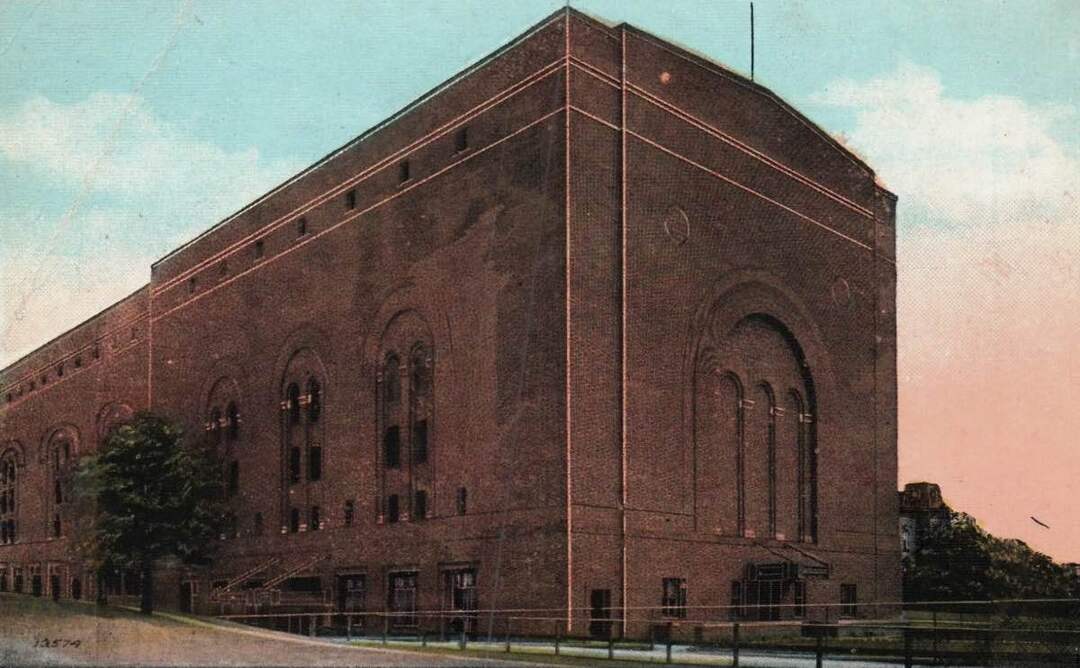Masonic Temple

The Masonic Temple and Performing Arts Center, built by the Scottish Rite Masons in 1919, was a testament to Cleveland's rich architectural and cultural heritage. Located at 3615 Euclid Avenue, the temple's opulent design featured marble staircases, elaborate meeting rooms, and a 2,000-seat auditorium. Though initially envisioned as part of a larger high-rise office building, the additional plans were never realized. Despite this, the temple became a cornerstone of Cleveland's arts and culture scene. For twelve years, it served as the home of the Cleveland Orchestra before Severance Hall's opening in 1931, and its fine acoustics ensured its continued use for many of the orchestra's recordings. Over the decades, the building also housed the Cleveland Masonic Library and Museum and renowned arts organizations such as Dancing Wheels, The Singing Angels, and Red (an Orchestra).
Among these, the Dancing Wheels Company distinguished itself as a groundbreaking professional dance organization that celebrated inclusivity and artistic innovation. Founded in 1980 by Mary Verdi-Fletcher, one of the first professional wheelchair dancers, the company became an international leader in inclusive arts. Dancing Wheels blended artistry and advocacy, challenging societal perceptions of disability while showcasing the richness of diversity through performance. With a repertoire ranging from classical ballet to contemporary works, the company collaborated with esteemed choreographers to create dynamic, thought-provoking productions. Beyond performances, Dancing Wheels also prioritized education and outreach, offering workshops and programs that inspired people of all abilities to engage with the arts. Their residency at the Masonic Temple until 2018 underscored Cleveland's commitment to fostering a vibrant, progressive cultural landscape.
The Singing Angels, founded in 1964 by William C. Boehm, further exemplified the Masonic Temple's role as a hub for artistic excellence. This internationally acclaimed youth chorus inspired audiences through a diverse musical repertoire and an unwavering dedication to creative growth. The Masonic Temple served as an essential rehearsal space for the ensemble, providing a setting steeped in architectural grandeur and cultural significance. This inspiring environment nurtured the young performers' musical talents and fostered a sense of community within the group. The years spent rehearsing at the temple greatly influenced the ensemble's artistic development, solidifying their reputation as ambassadors of music and peace while strengthening their role in Cleveland's cultural legacy.
Similarly, Red (an Orchestra), founded in 2001, left an indelible mark on Cleveland's arts scene through its innovative approach to classical music. Renowned for reimagining traditional works and championing contemporary compositions, the orchestra delivered immersive, transformative performances that captivated audiences. Central to Red's mission was the use of unconventional venues that enriched the listening experience, and the Masonic Temple Auditorium stood out as a prime location. Its striking architecture, historical resonance, and exceptional acoustics provided the perfect backdrop for the orchestra's groundbreaking concerts. Unfortunately, financial challenges led to Red's sudden disbandment in 2008, but the ensemble's legacy continued to inspire.
In 2017, a new chapter began for the Masonic Temple when TempleLive, also known as Temple CLE, acquired the property. Facing declining membership and high maintenance costs, the Masonic organization sold the building, allowing for its transformation into a multipurpose venue. TempleLive embraced the challenge of preserving the historic charm of the structure while adapting it for modern use, hosting concerts, weddings, and other significant events. This revitalization successfully breathed new life into the storied building, continuing its legacy as a cultural and architectural landmark.
Audio
Images



Although they were never built, this postcard shows a series of stone obelisks in front of the Masonic Temple, which were part of the original design. Source: Cleveland Memory, Michael Schwartz Library Special Collections at Cleveland State University Creator: Braun Post Card Co. Date: ca. 1920s





